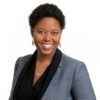This Spotlight is a part of a special blog series by the Case Foundation featuring Be Fearless stories from the field. Follow along with us as we meet people and learn about organizations that are taking risks, being bold and failing forward in their efforts to create transformative change in the social sector.
On the eve of its 100th anniversary, the Surdna Foundation is stronger, more nimble and more effective as a philanthropic organization than it has ever been. The secret to its success? Stakeholders who encourage failing forward, experimenting with new ideas and collaborating with others.
Created in 1917, the Surdna Foundation is a family foundation that has remained committed to a mission that captures its founder, John Emory Andrus’s beliefs: “Fostering sustainable communities in the United States guided by principles of social justice and distinguished by healthy environments, strong local economies and thriving cultures.” Aside from the mission however, little else about the foundation has remained the same.
Phillip Henderson, president of the Foundation since 2007, reflects that, “It’s been both an honor and a challenge to take on such an incredible legacy,” admits Henderson. “And it is no small task to keep Andrus’ vision alive and compelling to modern changemakers.” One of the unexpected struggles was simply explaining who Andrus was to his many far-flung descendants—and why his vision still matters a century later.
The Surdna team pushes themselves continuously and fearlessly to re-examine and re-interpret the organization’s philanthropic mission in the context of our time. The organization must work every day to answer several key questions—“What are the values espoused by the family? How do we make the work relevant, but still responsive to their values?”—then find ways to introduce new ideas and experiences (as well as challenging existing ones) to the foundation’s grantmaking.
Here are three examples of how the Surdna Foundation is creating its own fearless path forward:
Failing Forward
In Henderson’s President’s letter from Surdna’s 2014 annual report, he reflects that “Foundations are uniquely independent [organizations]… we believe we are most likely to stay on track if we remain committed to constantly pushing ourselves to take risks and to innovate. But also to analyze our successes, and especially to admit to and examine our failures.”
He goes on to detail a pivotal fail forward moment for the Foundation and one of its grantees that would later help to define its overall strategy:
“When the Los Angeles Metropolitan Transportation Authority voted in 2012 to award a nearly billion-dollar contract for light rail cars to a Japanese manufacturer with plans to build the cars in Osaka, Japan, we could see that our strategy of getting transit agencies to prioritize the creation of good American jobs in awarding contracts had failed. Despite the efforts of our grantee, the Los Angeles Alliance for a New Economy (LAANE), and a broad-based coalition of labor, community and business leaders, the transit agency’s decision signaled that jobs and opportunities for economic growth were considered a nice side benefit, but cost was what mattered most.
Failure suggests winners and losers, and that a definitive end point has somehow been reached. But the failure of the coalition’s initial attempt to focus transit agencies on job creation wasn’t an end point. Failure didn’t stop Madeline Janis, the coalition’s leader; it only caused her to re-think and then double down on LAANE’s organizing efforts, which eventually led to success when the Japanese firm agreed to do some of the manufacturing in California. More generally, failure in philanthropy rarely means “game over.” Often it is a moment to re-evaluate, re-focus and re-energize. It re-affirmed for us that one of the fundamental qualities of philanthropic capital is the ability to be patient and persevere—to analyze and learn from tactical failures while re-committing to strategy.”
These days, Henderson would add, “You can call it failure or understanding. We approach the world assuming we don’t know everything about the future, so we try stuff. Some things will work well and some won’t. Most things we do don’t work out exactly as we imagined.” To get better at learning, including learning from failures, Henderson explains that “we are increasing the relative time, energy, and attention we allocate to the ’back-end’ of grant making—long after the award has been made but when the work begins to yield learning. This is where we will find out how we are making progress or if—and why—a project is coming up short.”
Experimenting Early & Often
Like many other foundations Surdna has begun to explore impact investing and how it can deploy more of its capital toward its goal of achieving greater impact. We think of impact investing as the next step in what has been a long history of funding market-based strategies, along with policy and practice, to achieve the type of systemic social change we are focused on.
Several years ago, Surdna began implementing program related investments (PRIs)—an additional two percent of its endowment on top of the five percent it was already allocating for grant making annually. In the Foundation’s 2013 Annual Report, the team shared examples of some of its early PRIs. “We made an exciting PRI to support people of color and women running small businesses that allowed entrepreneurs to access government contracts. We also invested in regional food distribution, giving small- and mid-scale food producers a way to sell locally and resulting in more urban neighborhoods with access to affordable, healthy food from their own regions.”
Leadership at Surdna goes on to state in the Annual Report, “And we’re now discussing how we might expand our impact investing even further—beyond PRIs—to include aligning our endowment with our mission. Our board is excited to explore using our investment capital—not just our grant dollars—to contribute to social change.”
Collaboration
Henderson says that working collaboratively has allowed Surdna to pool its dollars, leverage partners and incentivize others, which ultimately grows the pot and helps the foundation scale up the transformative work being done by its grantees. One such example is Partners for Places, which is a matching grant program for national funders to invest in local community projects that promote a healthy environment, a strong economy and well-being for all residents. Surdna is one of six funders that support Partner for Places in an effort to encourage sustainability focused grantmaking. To date, Partners for Places has awarded more than $2.5 million across North America.
Through Surdna’s efforts to innovate with others, they have learned reaching beyond one’s bubble can ultimately help funders, grantees, policymakers and community leaders reframe how they work on issues, create new champions and ultimately deepen impact in the field.
“We’re paying attention all the time to who the other actors are in the space,” says Henderson of the ways Surdna exemplifies the Be Fearless principle of reaching beyond their bubble. “We’re not on the ground doing it, but rather we are identifying key innovators in that space and trying to give them funding and create connections.”
The Surdna Foundation’s embrace of a fearless approach has helped it stay true to its core mission while also allowing it to evolve for the next century of changemaking.
Feeling inspired? If you’re ready to begin your own Be Fearless journey start by downloading our free Be Fearless Action Guide and Case Studies.





